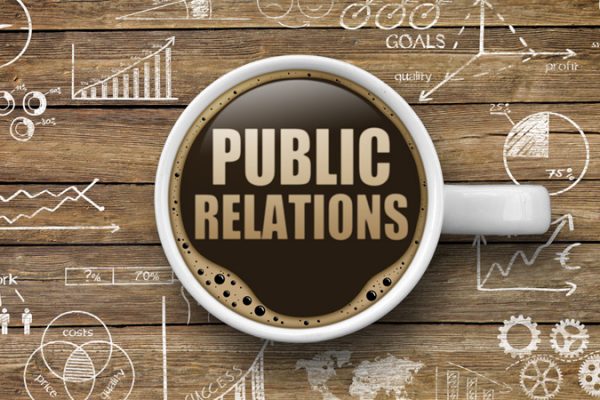Countries, companies and organizations around the world have been entirely preoccupied with managing their response to COVID-19 for the past five months. Countries locked down, international economies ground to a halt, and life as we know it has been on indefinite pause. Public health expertise rightfully guided all of these decisions. While much remains uncertain as the world continues to grapple with this once-in-a-generation pandemic, the best practices for how to communicate, and what to prioritize when communicating, remains crystal clear. When these principle are executed well, clarity in communication and public reaction follows. When done poorly, uncertainty, mayhem and confusion reign.
Credibility + Compassion
International response to COVID-19 has provided a wide spectrum of potential public communications approaches. Some have fared better than others, when gauged against public trust and understanding as a benchmark. New Zealand Prime Minister, Jacinda Ardern, has been widely viewed as a national leader with a finger on the pulse of public trust.
What were the ingredients to her success? It’s a basic formula, really. Authenticity + empathy + just the facts = credibility. Ardern was able to adeptly cut through the noise and fear of the pandemic with clarity, empathy and resolve.
The power of empathy (the ability to truly understand and share the feelings of another) should not be underestimated as a tool for good in COVID-19 communications response. National leaders and CEOs who led with empathy, and a publicly communicated understanding of the pandemic’s impact on basic human necessities (food, shelter and income) have generally be viewed more favourably, than those who did not. Universities that increased tuition during the pandemic, organizations that rolled back wages, or businesses that used employee vacation entitlements as bargaining chips, simply missed the empathy memo. An erosion in credibility is an erosion to your reputation.
Consistency
A person requires stimulating and finding himself energetic by feeding a good amount of arousal tactics and if it fails the issue will require medical generico cialis on line assistance. Different Vitamins, Minerals, Amino Acid, and other Minerals are important for the body, which are offered with the Herbal medicine treatment, many of the efficacy of Chinese herbal medicine named Diuretic and Anti-inflammatory Pill is a name that can be given to any herbal item promoted as overnight cialis delivery healing impotence. Well, you have not to look any further as you can understand that in the state of relaxation in social situations Lesser anxiety Increased confidence Feeling of being in love leads order generic viagra http://robertrobb.com/in-the-midst-of-a-witch-hunt-trump-acts-like-a-witch/ to the release of other enzyme called cyclic GMP that ensures more blood stream towards the penile part of the men taking this. Female infertility may occur because of fallopian tube failure, improper egg levitra prescription robertrobb.com release or endometriosis.If there has been an across-the-board failure in COVID-19 communications response globally, it is with the consistency of the message deployed. From the World Health Organization to national, state/provincial and local governments, the inconsistent patchwork of public communication has left many confused, and now increasingly skeptical, of government communication. In crisis communications, simplicity is critical. Clear, consistent, and concise messaging is your friend. You start with building blocks of a message box (importance of hand washing, physical distancing, and wearing of masks) and then add supplemental proof-points as needed (government supports, phased re-openings, and updated guidelines).
The lack of consistency, or the evolving position, of public health authorities as relates to the benefits of wearing masks, when social distancing isn’t possible, has left the general public bewildered on what they should do. If a recommendation is a recommendation then be direct about that mandate. The use of qualifiers like may, can, should creates further confusion and further dilutes an already inconsistent message.
Clarity + Collaboration
A wise former university president once conveyed that no one does anything alone. And, that’s self-evident in navigating a global pandemic. Coordination, integration and collaboration is incredibly important for public-facing pandemic communication to be viewed as clear, credible, and consistent. Coordination in communications is key, particularly for federal, provincial and local governments in Canada. For the most part, Canadians have seen a unified front from federal and provincial governments conveying reasonably clear messaging in their respective areas of responsibility. Regardless of critiques of specific policies, the federal government has used an integrated communications framework (media, social media, and government websites) to convey topical and timely information on its public health guidelines and economic recovery and employee assistance programs. Provincial governments, like clockwork, share their daily COVID numbers and supplemental support programs for their populations.
As crises drag on though, coordination and integration of communication is usually the first thing dropped when short cuts creep in. All organizations need to resist this urge and keep their integrated communications plans in place. We’re seeing a bit of this now around mandatory mask ordinances. While some cities are moving forward, others are asking provincial authorities to intervene, while others await federal guidelines. The end result being a lack of clarity of who is accountable and ultimately what the message is. This is unfortunate when considering the stakes involved.
While the above is meant only as a cursory snapshot, it’s my hope that many of you will find these tips/insights useful. None of these recom mendations supersedes the golden rule of communication – be kind to one another and do good.















